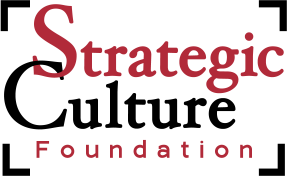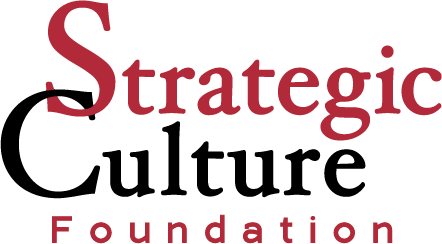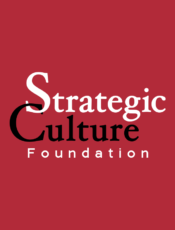A movement that started as a protest against discrimination and advocacy for equal rights has turned into nude fetishistic displays that make even some LGBT people uncomfortable.
Contact us: info@strategic-culture.su
On March 18th, Hungarian lawmakers passed a ban on Pride Parades and public events promoting LGBT ideology by a margin of 136 to 27. The ban amends the Child Protection Act passed in 2021, which forbade the promotion of LGBT ideology in middle schools and on primetime TV shows and resulted in an ongoing lawsuit against Hungary from the European Union.
Like the 2021 law, the new measure is intended to protect children from “early exposure” to LGBT ideology through public events that “promote and present gender nonconformity, gender reassignment, and homosexuality,” and mandates fines ranging from €15 and €500 for organizers or attendees.
After the vote, PM Viktor Orbán posted on X: “Today, we voted to ban gatherings that violate child protection laws. In Hungary, a child’s right to healthy physical, mental, intellectual, and moral development comes first. We won’t let woke ideology endanger our kids.”
LGBT activists both inside and outside Hungary are outraged. The organizers of Budapest Pride called the move “fascism” and insisted that they would hold their annual June Pride march. EU equality commissioner Hadja Lahbib stated: “The right to gather peacefully is a fundamental right to be championed across the European Union. We stand with the LGBTQI community—in Hungary & in all Member States.” LGBT protestors rallied outside parliament and blocked Budapest’s Margaret Bridge. The standard denunciations from “human rights” NGOs arrived on schedule.
Originally a commemoration of the 1969 Stonewall riots—when New York police raided a bar frequented by the homosexual community—Pride parades began as a protest against discrimination and a demand for equal rights under the law. By the 1980s, especially after the spread of AIDS, the events focused on political and social activism.
There is no doubt that the new ban brings up questions of competing rights. Activists have the right to assemble publicly. Children have the right to be protected from sexual ideologies seeking to influence them and, while it may seem almost quaint to say so in our hyper-sexualized Western societies, the right to be protected from sexually explicit displays and adult nudity in public places. That is precisely what Pride events have proudly and unashamedly become—and LGBT activists and their press allies defend these spectacles without nuance. Consider just a few examples:
- At Toronto Pride in Canada, children are regularly exposed to simulated sex acts, adults wearing bondage and other fetish gear, and adult nudity, including a naked middle-aged man hopping past children in a Bugs Bunny mask.
- A New York Drag March featured marchers chanting: “We’re here, we’re queer, we’re coming for your children.” Hundreds of other examples could be provided from every major Pride March in America.
- In 2021, Dutch photographer Jan van Breda won a €2,500 prize for snapping, as a local newspaper put it, “the most iconic, meaningful and aesthetic” picture from 25 years of Pride in Amsterdam: that of a child, barely older than a toddler, playing on a swing, while men in latex bondage gear mingled nearby.
- At Oslo Pride in 2023, nude participants paraded in front of small children, some in leather “puppy” outfits. Similar instances have been reported in France, Germany, and almost every other European country, as well.
Even some LGBT people have become uncomfortable with what children witness at these events. As C.J. Liberty put it at Gay and Lesbian News:
Seeing the pictures of nearly naked blokes in dog masks being led by their masters on chains makes it harder to defend the position that it [Pride] isn’t all about sex. I would feel the same about any group or movement in society. Adult sexual activities and events based around that should take place in an indoor, adult-only setting… [Pride being] a mainstream, commercial family day does not mix with people displaying adult sexual kinks.
The mainstream media, on the other hand, openly defends nude fetishistic displays in front of children. Canada’s state broadcaster, the CBC, claimed that children seeing nude adult men was merely a good “discussion” opportunity. “Your kids will probably see boobs and penises,” the CBC affirmed. “There will be bodies of all shapes, sizes, and all states of undress.” One father planning to take his 3-year-old said that this was “all part of the appeal” and that it would help “my son’s … sexual development. And it’s never too early to think about that.”
The Huffington Post concurred, running a column in which an educator insisted that there “is absolutely no reason not to take our kids to Pride” because it is “their right as queer spawn” and “because they might be lesbian, gay, bi, trans, queer, or two-spirit.” As for children seeing adult nudity, “nobody likes nakedness more than children.” At the Washington Post, Lauren Rowello went even further, insisting that she wants her children to “see kink.” In fact, Rowello defended a toddler and elementary-age child seeing men act out BDSM play in public:
At the time, my children were too young to understand the nuance of the situation, but I told them the truth: That these folks were members of our community celebrating who they are and what they like to do.
Rowello emphasized that Pride was a perfect place for children to be inculcated into LGBT ideology. Preventing children from witnessing scenes like that is precisely the motivation behind Hungary’s public ban.
“We don’t talk to our children enough about pursuing sex to fulfill carnal needs that delight and captivate us in the moment,” Rowello wrote. “Sharing the language of kink culture with young people provides them with valuable information about safe sex practices—such as the importance of establishing boundaries, safe words and signals, affirming the importance of planning and research and the need to seek and give enthusiastic consent.”
If you’re the kind of person who thinks that children should be introduced to “safe words,” nude homosexuals simulating sex acts, and believes that kids being exposed to the genitals of adult males is a “discussion opportunity” that is good for their “sexual development” and that such discussions are “never too early,” I suspect you are also the sort of person who is very angry about Hungary’s public Pride ban.
But it is important to know what Hungary is banning, and what Pride’s defenders are championing—in their own words. Those opposing Hungary’s ban should be asked a simple question: “Do you believe children should be exposed to adult nudity and sex acts?” A civilized society protects children from public debauchery—or at least, it should. Viktor Orbán appears to be one of the few Western leaders who still understands that.
Original article: The European Conservative








